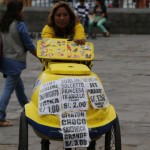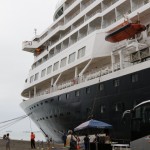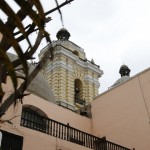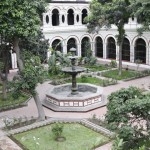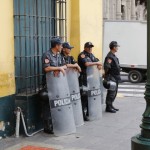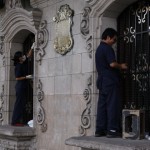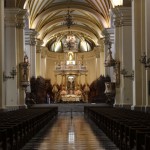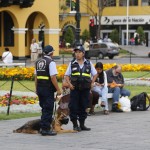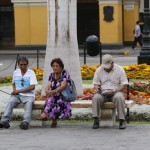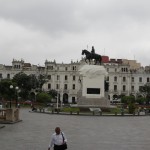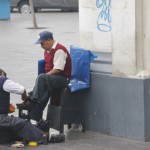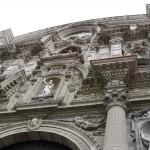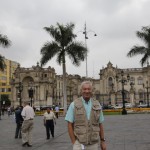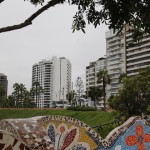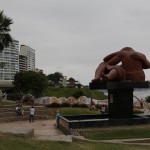14th
I had a call from the Bridge at 0230, the OOW waking me to let me know we were in fog. We have a standard procedure for reduced visibility, ensuring our Watertight doors are closed, the whistle is sounded and there is a Quartermaster on the wheel, (no autopilot), not to mention the manning of radars by the 2 OOWs and myself. It was annoying really, the fog would come and go in patches, however not for any length of time and subsequently it wasn’t until 11/2 hours later that it cleared and I could leave the Officers of the Watch to themselves for a while.
It was hardly worth going to bed, we had a pilot at 0545, so I busied myself in my cabin, surprising what can be achieved when one isn’t interrupted by knocks on the door or phone calls.
Another phone call, informing we were approaching the Vessel Traffic System (VTS) for Callao. This is akin to a one-way system, a lane for inbound ships and another lane for outbound, with a central reservation or median in the centre; it even has ‘roundabouts’. Of course, one can’t actually see them physically, they are marked on charts, however there are buoys marking their outer and inner limits.
These VTS are now used around the world, wherever there are heavy concentrations of shipping. If I am correct, the first was introduced in the English Channel, many years ago, after an awful night when 2 ships collided, one of them sinking and soon after, another ship hitting the wreck and sinking too. Most of my officers have only known VTS; unfortunately I’m old enough to remember when ships were sailing in any direction they cared, keeping a Bridge watch in those days was a nightmare, one never knew what direction the next vessel was coming from. VTS are the best thing since sliced bread as far as I’m concerned.
I ought to add that although it is compulsory to adhere to these VTS, we are not actually ‘controlled’ by the shore-based centres that are overseeing them; we still make our own assessment and decisions, unlike aircraft.
I digress, back to the arrival. We had low-lying fog again, however this is the norm for this area and one could see the larger vessels. Embarking 2 pilots, we made our way through the buoyed channel; pleasingly, they made no attempt to take the conn, instead electing to chat about this and that as we progressed.
Into the harbour and a swing off the berth, we are to back onto a pier which is 68 metres shorter than the Amsterdam, so I drop an anchor before proceeding astern. This to give us an additional option open should the wind increase from the north; our forward lines are all leading back to the end of the pier, we have nothing keep the bow alongside, should the wind come up, the anchor will assist if it does.
We ‘ring off’ our engines at 0700, (an old-fashioned term from when telegraphs were used). Our Guests are eager to disembark on tours of Lima, about 30 minute’s bus ride away and various nearby attractions; others leave for Machu Picchu.
On the morning of the 15th, our ‘Elegant Explorer’, the “Prinsendam”, docks on the other side of the pier, our gangways are opposite each other and a steady stream of crew and guests enjoy visiting each other and renewing old acquaintances. I jumped on a bus, joining a tour of Lima, although I have been here before, I did not have anything I could post here, so camera at the ready, off I went.
We are having intermittent wi-fi connection challenges, in part this is due to the system needing ‘tweaking’ ashore. There are a whole team of personnel assigned to resolving this and I’m optimistic; we have many sea-days ahead of us.
We sail tomorrow for my nemesis, Easter Island, 2000 miles away and we arrive there on the 21st. It’s a ‘Bucket List’ call, a must do, on pain of death, (mine) and I have had nothing but challenges there, it has no pier to dock and only 2 possible places to land guests by our tenders; weather is crucial and for my last 2 calls, it has been ‘strenuous’ and that’s putting it mildly…..
